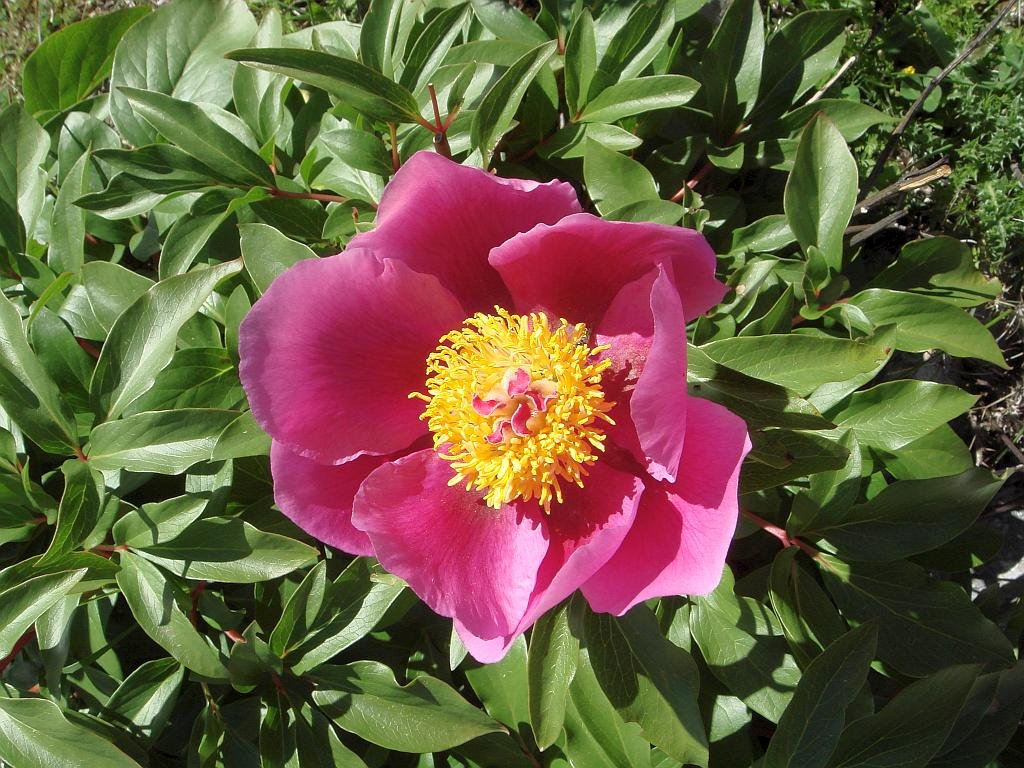Descending from high mountain peaks of plentiful alpine flora and descending through the multitude of botanical layers influenced by both Mediterranean and Atlantic habitats, The plantlife in Spain is a botanists dream.
From damp valleys to cliffs hit by the salty spray of ocean currents. Dry plains. Rolling hills or jagged mountains and on to the gentle Mediterranean sea and fixed sand dunes.
Over 9000 species of trees and plants have adapted to these conditions, even in the most inhospitable situations.
The Atlantic weather strongly affects the plants of the north, many of these being shared with the neighbouring European countries. Trees such as Oak, Beech and Birch may be accompanied with Heather, Bracken and Wild rose.
Travel to the south and the climate changes to where you are more likely to see Aleppo pine, Cork oak, Umbrella pine with Lygos, European fan palm and Gum cistus.
Spain holds many plant wealthy pockets that have long been isolated, creating endemics to be discovered no where else in the world. The mountain ranges of the Pyrenees, Picos de Europa and Sierra Nevada captivate the botanist and nature lover alike.
More information about individual plants can be found on the following pages.
- Trees in Spain
- Orchids in Spain The Mediterranean species of orchids (Orchids in Spain) are all terrestrial (unlike the flamboyant tropical species that grow in tree hollows termed epiphytic.)
- Shrubs in Spain
They are under constant scrutiny by biologists and it seems are constantly being renamed and re categorized.
Grasses in Spain
The fascinating history of esparto grass. exported in massive quantities the 1900’s for paper production in Britain and used to create many household items.
Frequently Asked Questions: Plantlife in Spain
Spain is one of Europe’s most botanically diverse countries, with over 9,000 species of plants and trees. Its richness comes from dramatic changes in geography—from high mountain peaks to Mediterranean coastlines, damp northern valleys, and arid southern plains. These varied habitats support numerous endemic species found nowhere else. Isolated microclimates, shaped by geography and history, have created true plant biodiversity hotspots.
Spain’s plant communities vary with climate. In the north, the Atlantic influence produces moist conditions that support oak, beech, birch, bracken, and wild rose. Heading south, the Mediterranean climate dominates, encouraging drought-tolerant trees and shrubs like Aleppo pine, cork oak, umbrella pine, fan palms, and gum cistus. The Canary Islands, with volcanic soil and subtropical weather, are home to highly adapted, xerophytic species.
Iconic mountain ranges such as the Sierra Nevada, Picos de Europa, and Pyrenees house rare alpine flora. These regions are rich in terrestrial orchids, lavender, and spring wildflowers like the Grazalema poppy and asphodels. Historical plants like esparto grass, once used in basketry and paper, are also part of Spain’s botanical legacy. Cabo de Gata-Níjar offers desert-adapted species including agave and cliff-dwelling flora.
Yes. Many endemic species are protected by European and regional conservation laws. These include some orchid varieties, ferns, and mosses found in high-altitude or coastal environments. Spain’s natural parks, biospheres and reserves are vital in safeguarding rare plants and their habitats.
Beyond flora, Wildside Holidays highlights Spain’s complete natural heritage, including mammals, birds, reptiles, amphibians, and insects. Their site features guides to National and Natural Parks, Biosphere Reserves, and UNESCO Geoparks, helping visitors discover the rich biodiversity of each region.
Wildside Holidays promotes a wide range of eco-tourism activities such as:
Walking holidays and hiking tours
Wildlife and birdwatching excursions
Botanical walks and photography trips
Hot air balloon flights
They also feature rural retreats, cycling tours, and private nature experiences provided by expert local guides.
Absolutely. Botanical tours are available in hotspots like the Sierra de Grazalema, where spring and early summer bring vibrant wildflower displays. Providers like Nature Plus – Grazalema offer guided plant walks to learn about local flora, endemic species, and habitat conservation.
The site offers guides for:
Andalusia, Aragón, Asturias, Canary Islands, and more
Iconic trails like the Caminito del Rey
Cities like Ronda and Cádiz
Spain’s top National Parks and nature reserves, with maps and wildlife highlights
Yes. Walking and wildlife tour operators in Spain are invited to join the Wildside Holidays website free of charge. To be featured, simply email clive@wildsideholidays.co.uk.
